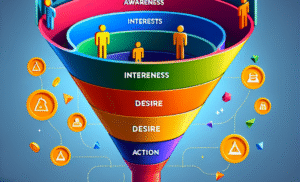Related Posts
Introduction
What Are Chatbots and How Do They Work?
- Rule-Based Chatbots: These operate based on predefined rules and scripts. They are suitable for simple, straightforward interactions such as FAQs or booking appointments.
- AI-Powered Chatbots: These utilize machine learning and NLP to understand complex queries, learn from interactions, and provide more nuanced, personalized responses. They are ideal for handling a wider range of customer needs and offering a more human-like experience.
The Role of Chatbots in Enhancing Customer Engagement
1. Providing Instant Support and 24/7 Availability
2. Personalization and Customization
3. Guiding Users Through the Sales Funnel
4. Collecting Feedback and Insights
Benefits of Using Chatbots for Engagement
- Cost Efficiency: Automating routine inquiries reduces the workload on customer support teams, leading to lower operational costs.
- Scalability: Chatbots can handle thousands of conversations simultaneously, ensuring that no customer goes unanswered during peak times.
- Consistency: Chatbots provide uniform responses, maintaining a consistent brand voice and messaging across interactions.
- Data-Driven Decisions: Analyzing chatbot conversations helps identify common issues, popular products, and customer sentiment, guiding strategic decisions.
Best Practices for Using Chatbots to Increase Engagement
1. Define Clear Goals
2. Focus on User Experience
3. Personalize Interactions
4. Integrate Multichannel Support
5. Keep It Human When Necessary
The Future of Chatbots in Customer Engagement
Case Studies: Successful Chatbot Implementations
1. Sephora’s Virtual Artist
2. H&M’s Chatbot
Conclusion
How to Perform a Website SEO Audit: A Comprehensive Guide to Boost Your Website’s Performance
Comments Off on How to Perform a Website SEO Audit: A Comprehensive Guide to Boost Your Website’s Performance
How to Rank Higher on Google in 2025: The Ultimate Guide to Boosting Your SEO Success
Comments Off on How to Rank Higher on Google in 2025: The Ultimate Guide to Boosting Your SEO Success
What Makes a Great Marketing Funnel? Unlocking the Secrets to Conversion Success
Comments Off on What Makes a Great Marketing Funnel? Unlocking the Secrets to Conversion Success
Google Ads vs Facebook Ads: Which Is Better?
Comments Off on Google Ads vs Facebook Ads: Which Is Better?



